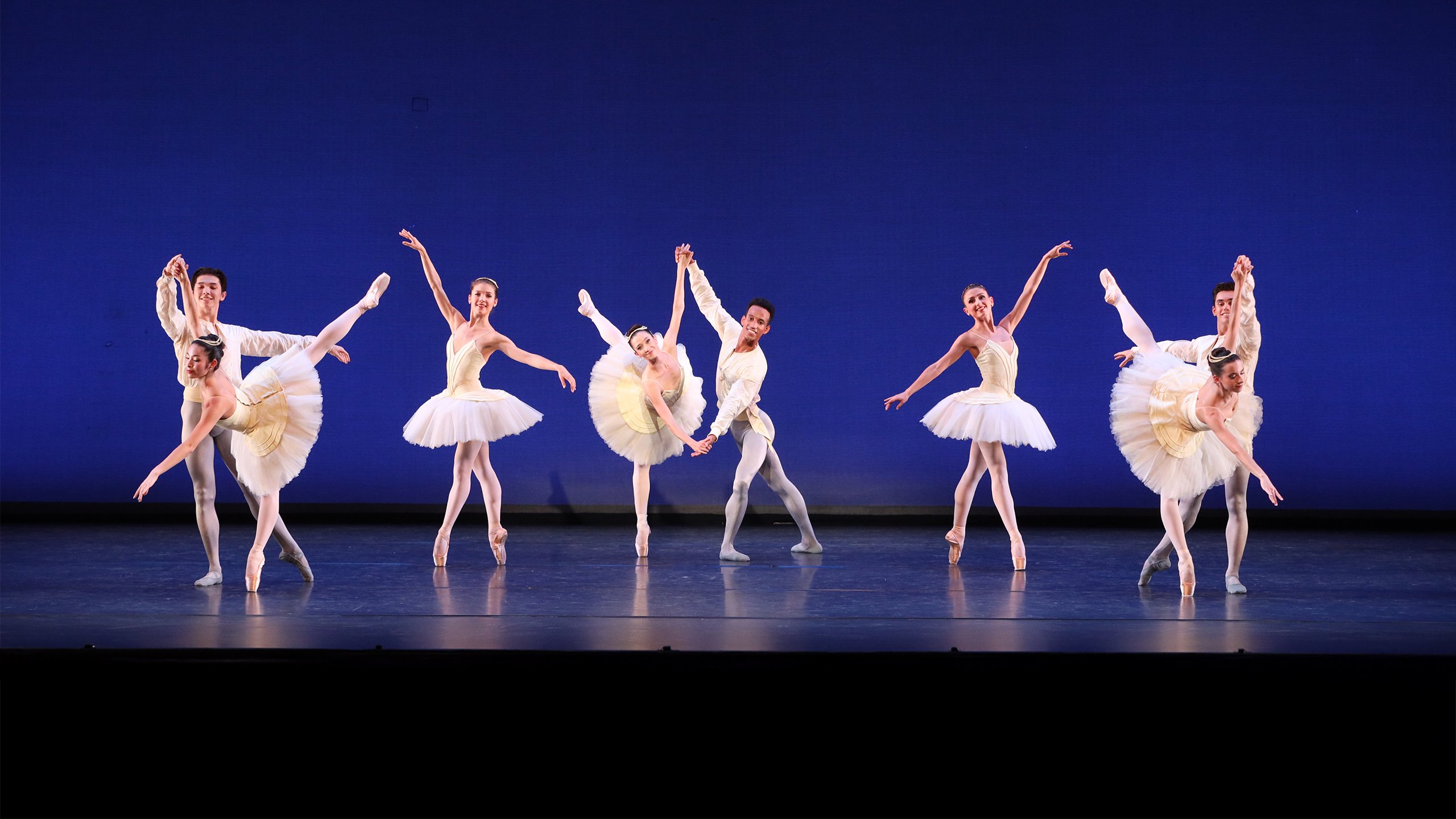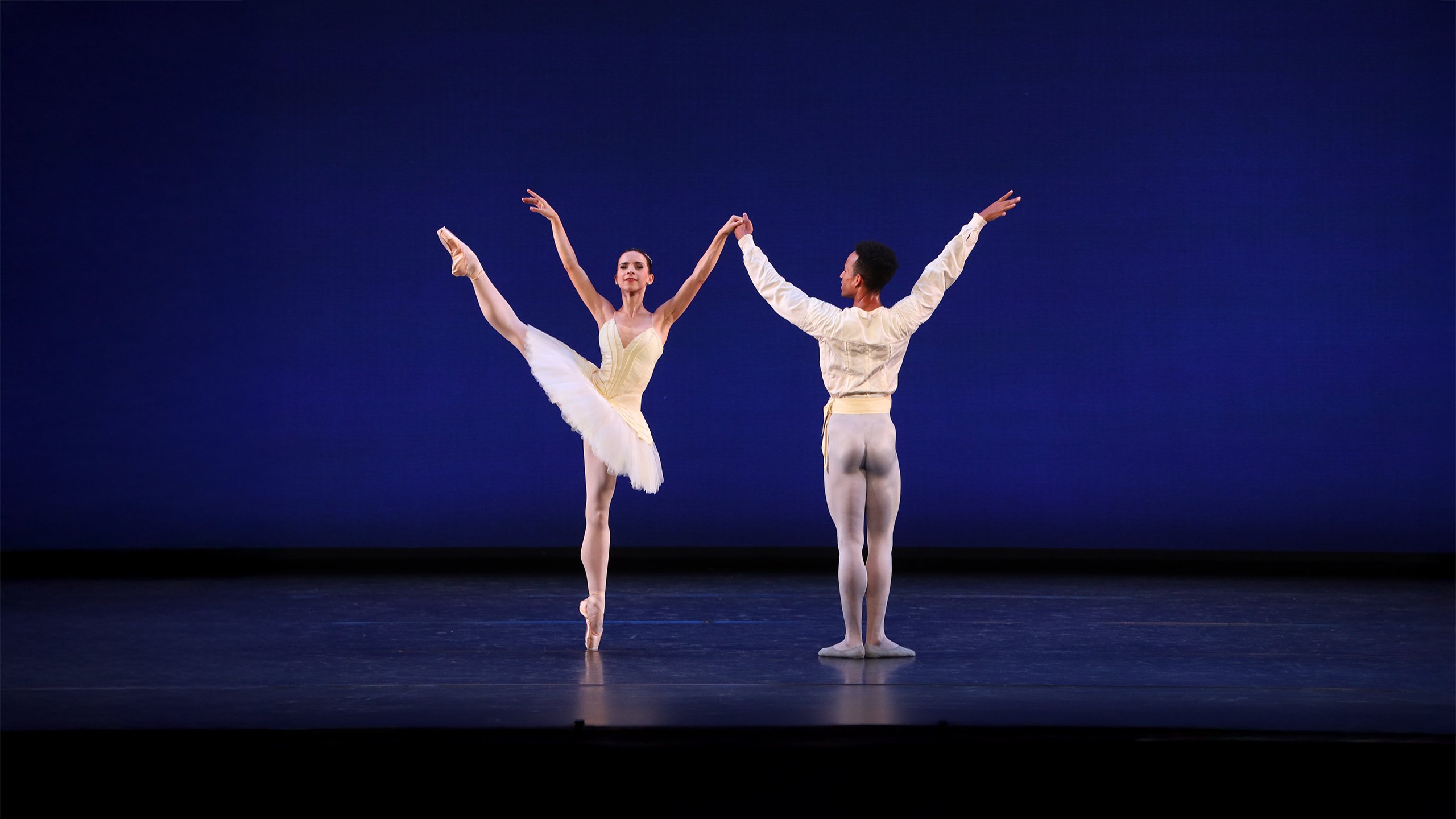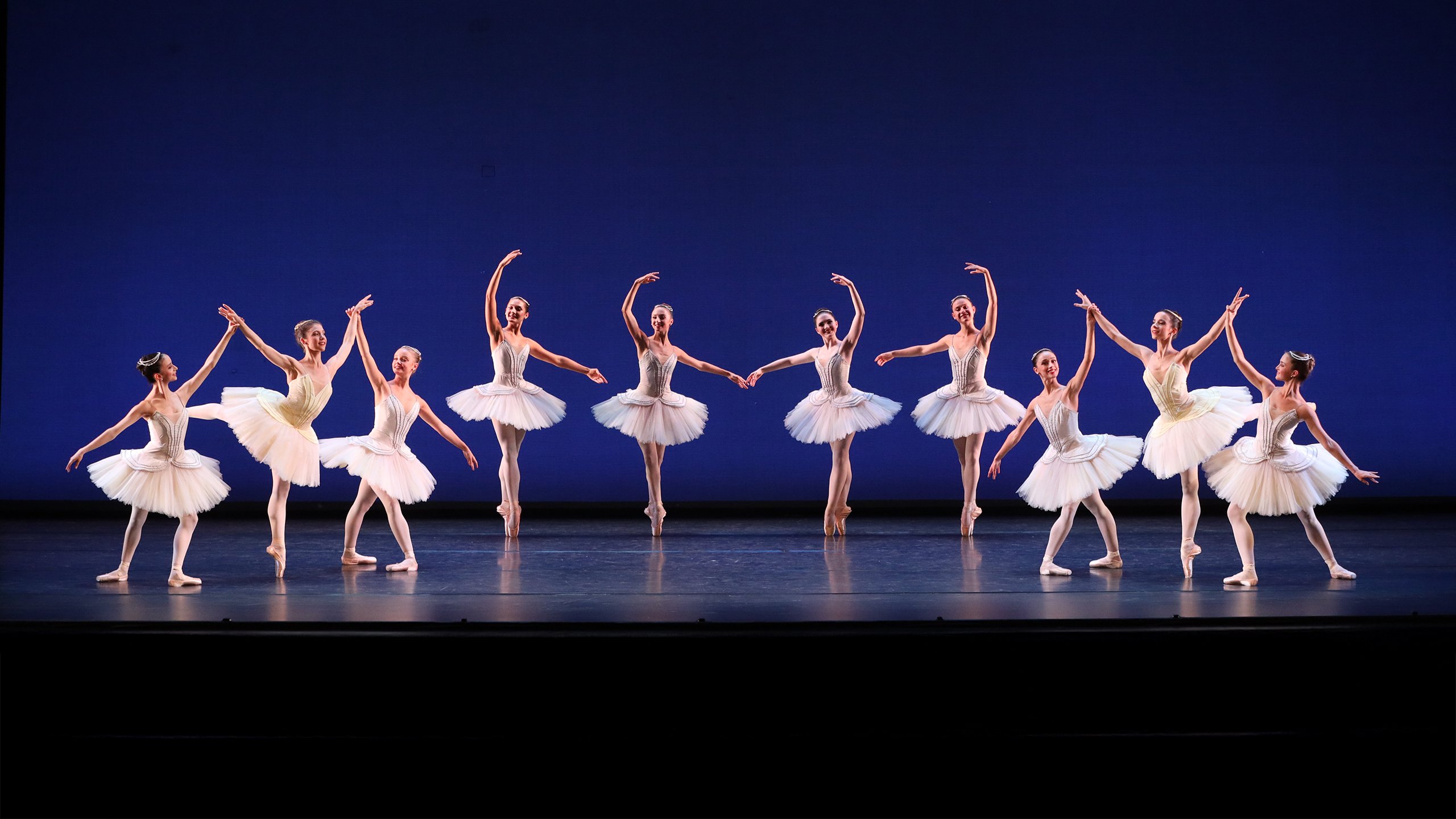Divertimento No. 15
George Balanchine
Premiered March 1, 1935, by American Ballet (now New York City Ballet)
Divertimento No. 15
In Divertimento No. 15 Balanchine set himself an interesting problem, casting five ballerinas and three cavaliers in the formal frame of Mozart’s score. As the music was intended to give pleasure to a sophisticated audience, so Balanchine gives pleasure to the eye through the inventive changes as dancers form varied partnerships of two and three against the background of a corps of eight women. A prime example is the beautiful Adagio, where one might expect a pas de deux, only to find a series of pas de deux with shifting partners for the five ballerinas.
A point of style: when the music reaches a cadence where Mozart expected the solo violin to improve a cadenza, Balanchine commissioned one for violin and viola. He also cut one of the two minuets and the slow introduction to the last movement. Mozart himself thought highly of the score, as is clear from his letters to his father.
Balanchine first used this music for a ballet called Caracole, a technical term in fine horsemanship, as if suggesting that he was displaying his thoroughbreds. Reworked in 1956 as Divertimento No. 15 to celebrate the two-hundredth anniversary of Mozart’s birth, it became one of Balanchine’s purest examples of dance for its own sake as well as his tribute to a composer he revered.


